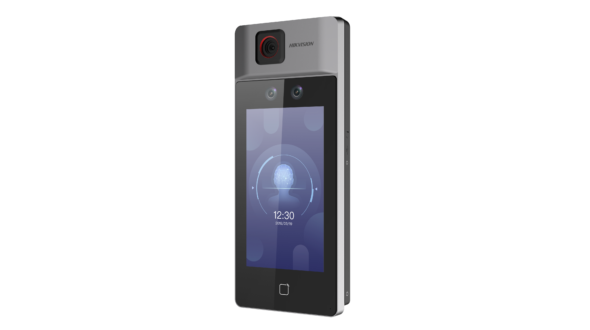
Work has become what you do, not where you go. At the same time, we are entering a ‘coronavirus crossroads’, with the fear of an even more deadly second spike. Could technology provide some powerful protection?
Nick Sacke, head of IoT and products at Comms365, said, “Employees need streamlined communication and collaboration systems to perform their roles to an optimum level. A shared digital collaborative space where users can assign tasks, participate in discussions and provide updates is the catalyst for productivity, especially in the absence of a shared office environment.
“These elements are essential in the current circumstances but will also be an integral part of the future business environment. As lockdown measures start to be lifted, businesses will not immediately shift back to the working practices of before. The future workforce will expect businesses to embrace remote working as an integral part of business operations.”
Nigel Dunn, managing director, Jabra EMEA North, feels flexible collaboration and remote working are the biggest trends of 2020 which will continue well past this year. He said, “Predominately driven by Covid, UK workers have been forced into a new way of working. Work is now the job you do rather than a place you go. Indeed, many feel just as connected to their team now than when office-based. Mass acceleration of team apps and software and hardware technology have successfully facilitated remote working and a sense of community. We will also see further trust put in workers at all levels.”
Dan Waters, UK country manager for Arrow’s enterprise computing solutions business, pointed out that, as people to go back to workplaces when they cannot work from home, technology will play a critical role in keeping people safe. He said, “Technology will help to optimise productivity while ensuring employee health. The current circumstances have put this under the lens but, for a number of years, due to increased employee mobility and remote interaction, building owners have been seeking to better manage these spaces.”
Paul Dunne, EMEA Channel director at Poly, said we’ll see company offices become places for human-first connections, with a choice of spaces for employees to collaborate, think, create or simply check in with others. “We are already seeing the rise of AI in video conferencing solutions, bringing richer ways to collaborate and share. For example, cameras with automatic speaker tracking and split screen functionality ensure participants both in and out of the office are fully immersed in the meeting.
“For the home, we’ll see new enterprise-grade market solutions with the prosumer buyer in mind. These will enable individuals to choose professional yet stylish technology solutions that guarantee high-quality audio and video, minimal set-up and the utmost security with simple, intuitive device management.”
Adaptable and flexible
One interesting concept is from start-up company ROOM. It has expanded its product portfolio with a suite of new modular architectural solutions designed to meet demand for adaptability and flexibility in the office.
With the rise of virtual and remote work, efficient video-conferencing is a necessity. To accommodate new hybrid ways of working, and extend collaboration beyond the four walls of the office, its meeting room solutions feature an integrated Jabra PanaCast 180-degree video conferencing camera, offering a full view of the space without distortion or delay.
ROOM’s prefabricated solutions allow any company to add a space-efficient, ready-touse, video-conference room to their workplace in a single day. Meanwhile, digital workplace solutions provider Spica helps corporate real estate (occupiers, owners and managers) respond to the changing needs of the workplace through connected digital technologies. This benefits the health, wellbeing and productivity of building users as well as driving down operational costs.
The data collected by Spica-managed sensors and other building management information systems make it simple to reserve a desk in an optimal position in an office. That might be based on personal preferences for current lighting or heating situations, for example.
The office of the future
Smart technology is expected to play a significant role in building the office of the future. Comms365’s Sacke highlighted what this might look like. He said, “Real-time collaboration has become an essential technology for offices, and IoT defines it. Fixed, portable and wearable devices are integrated into the design and interact with each other through a cloud-based network to deliver data and insight. The scalable and robust solutions that IoT offers can enhance business efficiency, and most importantly, employee productivity.
“By implementing the correct technology solutions, business resilience can be rapidly assured. Not just for now, but also as we adapt to the ‘new normal’ of the future office environment.”
IoT is already playing a large role in facilities management, according to Jabra’s Dunn. “Technology that has builtin people detection provides the possibility of systemwide business intelligence by capturing accurate usage and occupancy information. Software will monitor busy office locations to check usage, where there might be a need to disperse staff or limit the number of staff in any given area. It could also be used to notify housekeeping of a used room that needs cleaning before the next meeting. As AV and IoT become more integrated, the need for accurate data and metrics increases.”
Waters, from Arrow, pointed out: “Traditionally, IoT technologies focused on back of house functionality with an emphasis on building, infrastructure and utilities. As much as these capabilities are important, the role that IoT can play in terms of the human element has become critical, particularly given the current circumstances.”
Andrew Dickinson, MD of Jola revealed significant IoT deals are currently being won. “We have been impressed by the flexibility and versatility of the channel. Activity on Mobile Manager has doubled in three months as resellers pivot into mobile data and IoT. Initially it was mobile broadband for homeworkers and SIMs for NHS testing stations. However recently we have seen partners, with no previous experience, winning huge and sustainable IoT deals.
“Resellers want simple but differentiated products that produce good margins and are easy to bill and support. SIM-only and particularly eSIM exactly fit the bill and can be activated in hours rather than the weeks or months required for fixed-line services. Just like working from home, selling mobile data is something that people have suspected is a good idea, but it has taken being forced into it to permanently change behaviours.”
The bigger picture
The impact of high-quality video and audio conferencing isn’t lost on Jeff May, UK sales director at Konftel (pictured below). For the first time in its 32-year history, Konftel is selling more video-oriented equipment than audio solutions in the UK and beyond, with the former now accounting for 65% of demand.
High performance video kits such as the C20Ego and new all-in-one Konftel CC200 collaboration camera are helping dispersed workforces collaborate. May explained, “The world of work has changed and it will never go back. Technology has undoubtedly inspired a shift in culture but it’s not a universal sea change. Some people are now working in the office again, others want to remain at home and there’s also a growing number who prefer to do both. Every company will have their own views and policies too.
“In the past many businesses felt they needed to have all staff together to feed off each other. Some doubted the efficiency of remote working. But now most are more flexible. Technology has fuelled this transition.
“We’ve all got to realise that remote working does bring its own challenges, especially around mental well-being and isolation. There’s now a viable choice [between] your office at home or being surrounded by colleagues [in the office]. Whatever the requirements, high quality video and audio conferencing provide a compelling platform to do both.”

New opportunities
In the age of Covid, there is a new market for partners to sell temperature monitoring devices and other safety equipment. Jabra’s Dunn believes Covid has changed the type of equipment and products offices are purchasing. “Niche products and services have been catapulted into the mainstream due to the pandemic. Office safety equipment, which was normally reserved for specialist working environments, is quickly becoming the norm and is being purchased in large quantities.
“It’s allowed resellers the ability to sell ‘social distancingfriendly’ hardware and software, such as AV equipment, that allows for social distancing in meeting rooms, at desks and in collaboration spaces.”
Comms365’s Sacke said, “Covid-19 has acted as a catalyst for this market by accelerating the need for safety technologies and equipment, including temperature monitoring devices, sensors and tracking technology.
“Smart technology can also be used to safely monitor and alarm the mandatory two-metre difference between people via infrared beams on walkways. [It can also] analyse movement around the office in recreational areas using thermal imaging camera systems. Using AI algorithms, the technology can alert when gatherings of too many people are occurring in one place, enabling measures to be taken earlier to restrict numbers and disperse groups.”
CCTV in focus
As Britain continues to plot a path forward, CCTV technology is playing a pivotal role, according to Camilla Kirkham, director of sales (CCTV and AV) at Nimans. “Almost half of all employees were working from home during lockdown, with video conferencing and other forms of unified communications such as Microsoft Teams taking centre stage.
“Here at Nimans we launched a series of hi-tech solutions from Hikvision that boast fever screening and even face mask detection technologies – and they are proving extremely popular. It’s not just about general safety, but protection and compliance. Employers have a duty of care.
“I really love the way our industry continues to evolve and create solutions. For example, cameras can help ensure social distancing is maintained. There’s no silver bullet but, when combined with common sense, there’s some really credible software-driven solutions being developed to protect staff and the livelihoods of companies.
“There’s going to be increased uptake especially of Bi-Spectrum solutions which combine video and thermal cameras side-by-side. This is utopia in a way. Technology will continue to develop and prices will come down as demand increases. In the future, continued advances in thermal technology will enable the detection of hidden weapons and items of theft concealed under clothing. There are so many applications to make the world a safer place.”
Below: a Nimans fever detection solution.

A trusted advisor
According to Sacke, from Comms365, the channel is uniquely positioned to act as a trusted advisor. He said, “Specific opportunities include security for company networks, collaborative software, collaboration tools, [and] IoT network solution provisions.”
But the market must react to the ever-changing situation, said Jabra’s Dunn. “Vendors must keep innovating and developing hardware and software that incorporates the requirements for the office of the future. Customers want and need future-proofed hardware that delivers value in multiple scenarios. This can be achieved by software licence upgrades or resellers providing added value with hardware offerings that provide firmware upgrades.”
Arrow’s Waters said with unprecedented demand for remote working technologies over the last few months, the need for technologies that facilitate safe and secure workplaces has now become just as important. This is likely to result in a hybrid of remote and office-based working for many organisations. He added, “This creates a multitude of opportunities across the channel, from consulting, to implementing software, hardware and IoT technologies that will help to create safe workplaces, whether that’s an office block, factory, retail outlet, or hospital.”
Dunne, from Poly, feels 2020 has been the catalyst to radically accelerate hybrid working, where employees have the flexibility and choice over when, where and how they work. He said, “Organisations need to expand their technology investment beyond the central office to create consistent, enterprise-grade experiences whether the employee is at home, in a co-working location or in a company office.”
He emphasised, “The expansion of technology and increased investment offers a great opportunity for the channel to ensure that, no matter where employees work, they’re equipped with optimal technology and communication solutions that drive productivity and collaboration.”
Are you prepared?
With winter looming and fears of a second wave of cases, just how prepared are businesses to handle another crisis? Research from Swiss Post Solutions and NelsonHall highlights the need for document digitisation for remote and Covid-secure workplaces. The research found just 16% of organisations perceive their operations as highly resilient to another crisis. The shift in working patterns has hampered access to data and documents – severely impacting the customer experience.
Gary Harrold, Swiss Post Solutions’ UK CEO (pictured below), explained, “In light of this, document processing of electronic and physical documents are vital to establishing operational resilience. 92% of organisations are looking to increase automation while 80% are looking to digitise mailrooms, with over 70% seeking to digitalise document processes. We may be on the way to the paperless office but until then, the workplace of our near future will still rely on paper mail. The difference is that it will be delivered to final recipients in a wholly digital way.”

